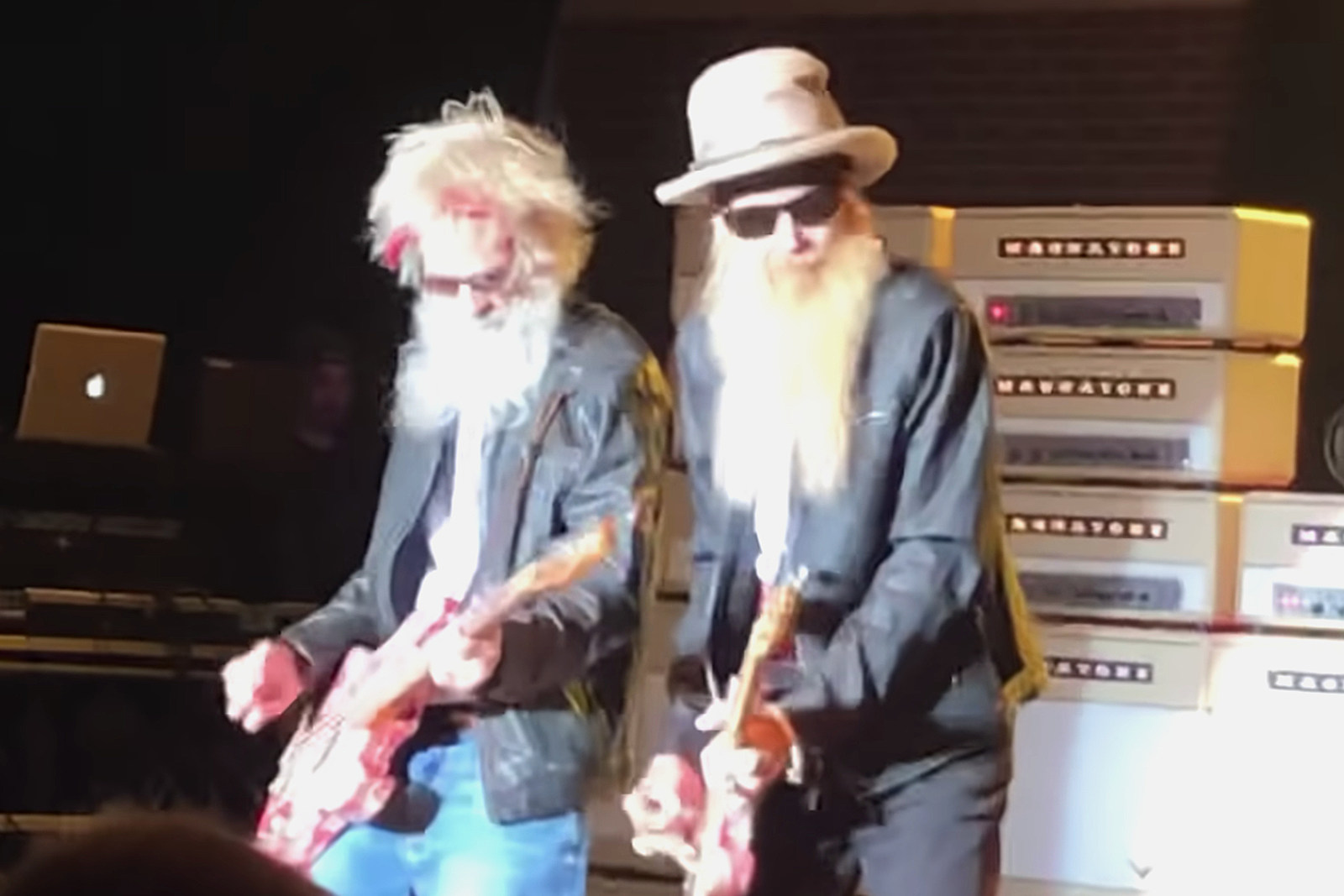

When they returned in 2012, it was with the stellar single Gotsta Get Paid, which was a brilliant remake of the Houston hip-hop standard 25 Lighters by DJ DMD.

The real absurdism started to come through in the late 70s and early 80s, as ZZ Top started integrating influences from new wave and electronic music, culminating in them becoming unlikely pop stars with the Eliminator album, whose videos shrewdly used the band as almost supernatural beings materialising in the lives of others: they looked so odd, so alien in the MTV world, that casting them as otherworldly made perfect sense. But it didn’t matter - here we are a long time later and we’re still talking about it.” “There were six or eight semi tractor trailers to carry the gear and they were painted in a desert scene and they were done in order – they had to travel down the highway in a certain order so the scene went from one to another,” Hill said.

Their stage was a recreation of the Texas scrub, complete with the wildlife: real pigs, snakes, buffalo and all. Fandango also offered up the song Hill was best known for, Tush, a number so single-minded in its focus on the female body that it became a strip club favourite.īut if that suggests ZZ Top were the lowest common denominator, their tour in support of the album – the Worldwide Texas Tour – proved they were anything but. Rooted in the blues, but urgent and dynamic and in that great tradition of songs that celebrate the motivating power of radio, in this case the “X” stations – those with the call letter X – based just across the border in Mexico, blasting blues and rock’n’roll and whatever else into American ears. Heard It on the X, from the 1975 album Fandango, is one of the great Top songs. Photograph: Serena SY Hsu/ZUMA Press Wire/REX/Shutterstock Billy in Houston and myself and Frank in Dallas – we wrote the song Heard It on the X about that.” But the thing with this band that we noticed early on is that the three of us, independent of each other, listened to a lot of the same radio shows. “And I’d bring Muddy Waters or Son House or something, and the parents of these other kids would almost freak out – ‘What the fuck are you bringing here?’ Whoa! I thought everybody had these records, because that’s what I had. “Back then, kids would go to each others’ houses, bring some records to play,” he said. He’d grown up in a household where his mother listened to the blues, which wasn’t true of every white family but turned out to be something he shared with his future bandmates. He was marked out as musically weird from childhood. But however much crap you got about it, you got tenfold back in experience, because there’s so much music down there.” I’d bring Muddy Waters or Son House or something, and the parents of these other kids would almost freak out I got probably less shit about having blue hair than about having long hair, because I believe they thought I was crazy. “I was with a group called the American Blues, and at that time we had long, blue hair – in the 60s in Texas. “Being a musician in Texas had its own set of risks,” he told me. And when Hill started playing music in the 1960s, that act alone was enough to mark him as an outsider in the Lone Star State. Instead, they were Texans, with everything that conveyed: part traditional, part contrary, and part of the deep seam of Texas weirdness that stretched from the 13th Floor Elevators through to the Butthole Surfers. Hill and ZZ Top came from the blues, but neither Hill nor the band were the simple 12-bar boogiers they were often portrayed as.

And, perhaps even more importantly, the pair came as a double act, not just by looking so similar they could be mistaken for one another but also in the perfect, minimalist choreography of their stage show (“Low energy, high impact,” as Hill described it to me, later that afternoon in Maryland). He sang lead or co-lead on several of ZZ Top’s best loved songs – his high, true tenor a contrast to Gibbons’ radioactive growl – and his bass tone was every bit as crucial to their sound as Gibbons’ guitar. But Hill, who died in his sleep aged 72, was just as important. Gibbons tended to be the focus of attention: he was the guitarist he took most of the lead vocals he was the band’s great and delightful eccentric. “Billy, can I get a photo with you?” But Dusty Hill clearly didn’t like being mistaken for Billy Gibbons, who stood a few feet away from him on stage with ZZ Top for more than 50 years, and he walked away without a word. In 2012, backstage at a strange festival in Maryland, I watched as drunk twentysomethings walked up to a man with a vast beard, eyes hidden behind shades. D usty Hill was evidently used to being mistaken for someone else.


 0 kommentar(er)
0 kommentar(er)
